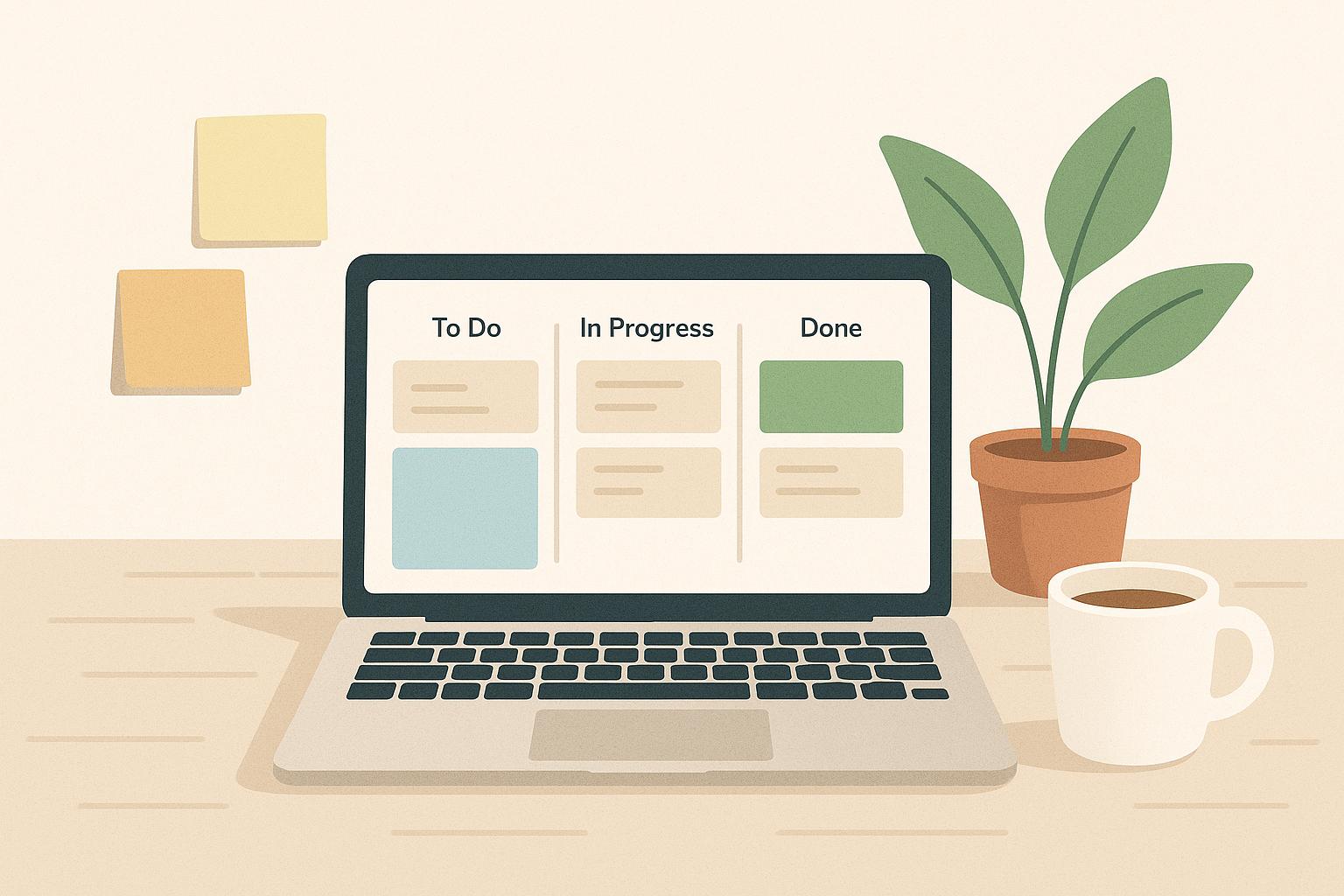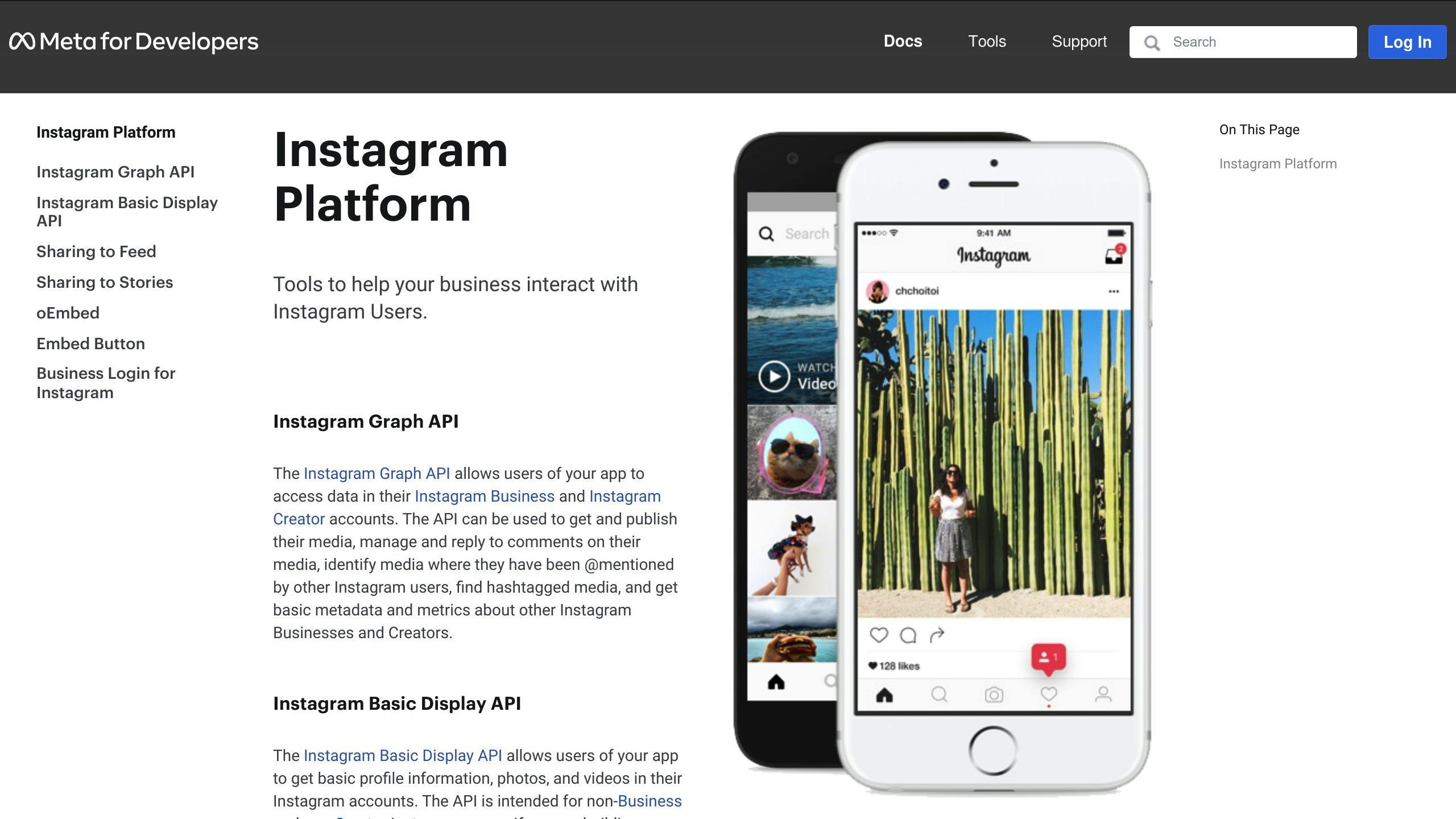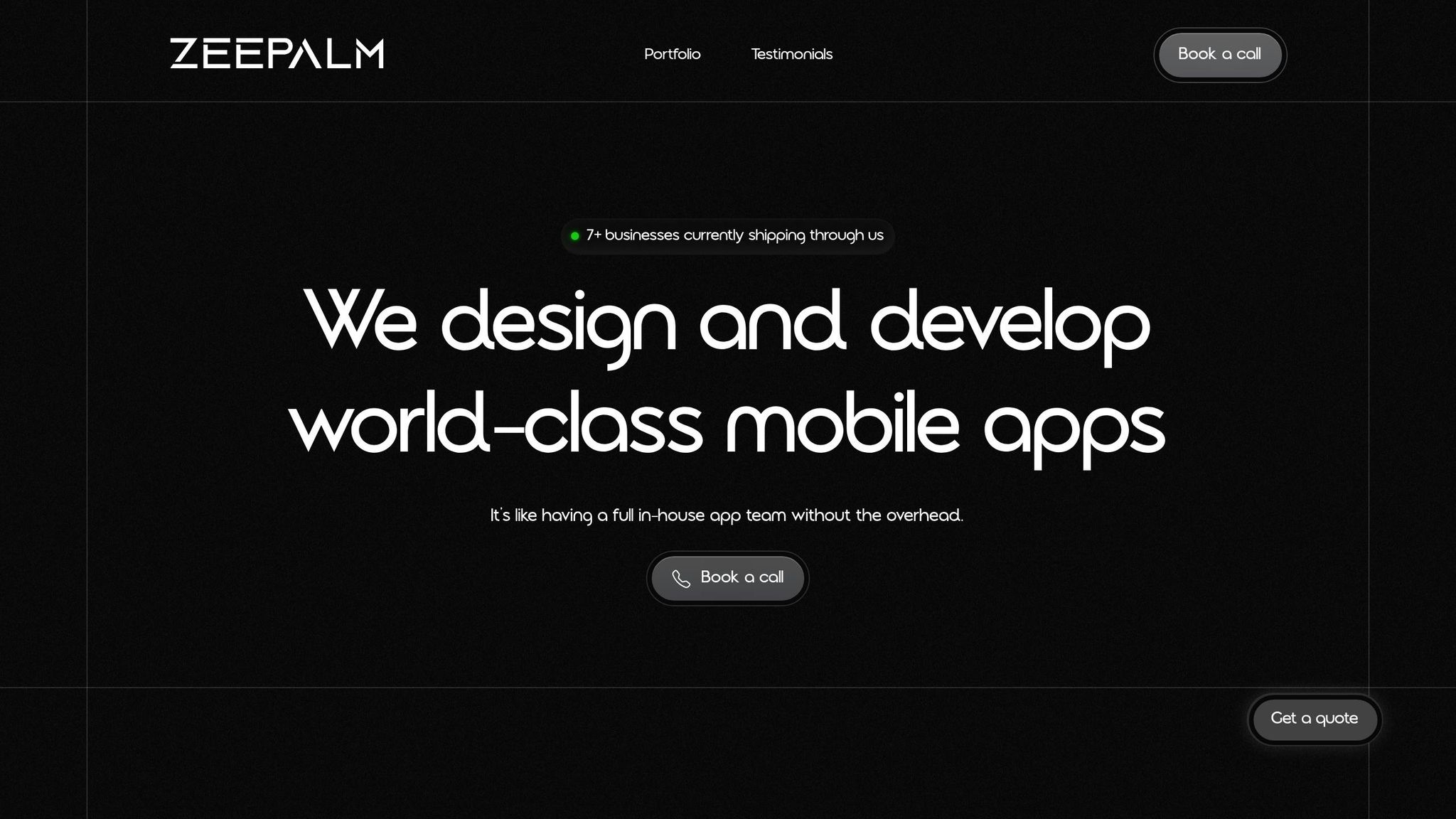Agile development helps startups save time and money by focusing on small, iterative updates and user feedback. Instead of building a full product upfront, Agile prioritizes delivering functional pieces quickly, reducing the risk of wasted resources. Startups benefit from Agile's ability to control costs, avoid unnecessary features, and adapt to market needs.
Key takeaways:
- Cost control: Agile reduces waste by focusing on validated features, cutting failed feature costs by 50%.
- Faster delivery: Short cycles (sprints) allow for quick MVP launches and early feedback.
- Flexibility: Agile methods like Scrum, Kanban, and Lean help manage resources effectively.
- Budget management: Aligning budgets with sprints ensures financial control and avoids overruns.
For startups, Agile is a practical way to build products efficiently while staying within tight budgets. Tools like monday.com, Jira, and Trello simplify planning and tracking, while practices like automated testing and MVP development keep costs predictable. Partnering with experienced Agile teams, such as Zee Palm, can further streamline the process.
Agile Budgeting versus Traditional Project Budgeting
Top Agile Methodologies for Budget-Friendly Development
Startups looking to keep development costs in check often turn to Agile methodologies like Scrum, Kanban, and Lean. Each of these approaches offers distinct advantages for managing budgets effectively, and understanding their core principles can help you decide which one best fits your project needs. Let’s break down how each methodology supports cost control and faster delivery.
Scrum: Development in Short, Predictable Cycles
Scrum organizes development into sprints - short, fixed-length cycles that typically last 2–4 weeks. This structured approach ensures predictable costs by freezing the scope of work at the start of each sprint. Once a sprint begins, the team focuses exclusively on a defined set of tasks, preventing scope creep, which can lead to wasted resources. In fact, scope creep accounts for an average loss of 11.4% of project budgets.
The product owner plays a pivotal role in prioritizing the project backlog, ensuring that the most valuable features are tackled first. This prioritization, combined with Scrum’s iterative nature, supports the development of a minimum viable product (MVP) early in the process. Regular sprint reviews and retrospectives provide checkpoints to evaluate progress and spending, allowing for mid-project adjustments to stay on track financially.
Kanban: Streamlined Visual Workflows
Kanban focuses on maintaining a continuous workflow rather than adhering to fixed-length cycles. Using visual boards with columns like "To Do", "In Progress", and "Done", Kanban makes it easy to track tasks, spot bottlenecks, and improve team efficiency. A key cost-saving feature is the use of work-in-progress (WIP) limits, which prevent teams from overcommitting and reduce the inefficiencies caused by frequent task-switching.
This method is particularly effective for startups juggling ongoing maintenance with new feature development. By clearly visualizing workflows, Kanban helps teams allocate resources wisely and address inefficiencies before they escalate into costly delays.
Lean: Focus on Value and Waste Reduction
Lean methodology is all about delivering what customers need while cutting out unnecessary steps. Every decision is guided by the principle of maximizing value and minimizing waste. Lean teams regularly assess their processes to identify inefficiencies and eliminate redundant tasks, which naturally helps lower costs over time.
Lean also prioritizes early delivery and fast feedback. By releasing an initial version of your product and refining it based on real-world usage, you can avoid overengineering solutions to problems that may not even exist. Tools like value stream mapping help teams visualize how resources are being used, making it easier to eliminate steps that don’t directly contribute to customer value.
MethodologyBest ForCost Control FeaturesTime to MarketScrumTeams requiring structured workflowsFixed sprint scope and regular reviews2–4 week cyclesKanbanTeams with dynamic prioritiesWIP limits and workflow visualizationContinuous deliveryLeanEfficiency-focused teamsWaste reduction and value-driven decisionsRapid, iterative updates
Agile Practices and Tools for Startups
Agile methods thrive in startups because they help teams move quickly while keeping costs under control. The best startups pair thoughtful planning with automation and strategic product development to make every dollar count.
Sprint Planning and Feature Prioritization
Sprint planning works best when you break your product into small, manageable pieces. For example, instead of tackling an entire messaging system, focus on delivering one feature, like 1-on-1 chat, at a time. This approach ensures your team delivers value quickly and can adapt based on user feedback.
By committing to short cycles - such as delivering one feature per week - you’re forced to prioritize only what matters most. This way, every development hour directly benefits your users.
Tools like monday.com can speed up this process. According to their data, teams using their platform achieve a 28% faster time to market, which translates to significant cost savings. Their AI-powered features identify risks early, helping teams avoid delays.
"monday dev ensures clear alignment between what we're building and market demand. Does it help us move faster? Without a doubt." – Alan Schmoll, Executive VP, Vistra Platform
Other tools like ClickUp and Slack also play a vital role, streamlining feature requests and tracking progress. These platforms help teams maintain efficiency and align their work with tight budgets.
Once you’ve prioritized features, the next step is ensuring quality through integration and testing.
Continuous Integration and Automated Testing
Automated testing is a smart investment for startups aiming to save money. Teams using strong CI/CD (Continuous Integration/Continuous Deployment) pipelines report a 66% reduction in post-release bugs. Fewer bugs mean fewer emergency fixes, less downtime, and more predictable costs.
Continuous integration allows teams to catch and fix issues early, avoiding the chaos of reactive development. Once your testing pipeline is up and running, it works automatically, saving developer time with every release.
These practices lay the groundwork for creating an effective MVP.
Building a Minimum Viable Product (MVP)
When building an MVP, the goal is to validate your core idea, not deliver a fully-featured product. Start with the bare essentials - just enough to demonstrate your product’s primary value. This approach minimizes upfront costs while providing real-world data to guide future decisions.
A successful MVP solves one key problem. Using frameworks like the MoSCoW method (Must have, Should have, Could have, Won’t have) can help you prioritize features based on user impact and technical complexity. This prevents scope creep and keeps costs predictable.
For example, a basic development package - delivering one feature every two weeks with up to three developers - might cost around $3,000 per month. A more robust package, delivering one feature per week with up to five developers, could cost $6,000 per month. Structuring your development this way forces disciplined decision-making and ensures steady progress.
"It's customizable to your needs. It's like water. It'll take its shape and wrap around whatever you need it to do." – Chris Funk, Senior Director of Product Innovation, Zippo
Sticking to a weekly delivery schedule keeps your team focused and allows for regular adjustments based on user feedback. This approach not only maintains momentum but also reduces the risk of costly course corrections later on.
Budget Management in Agile Development
Managing your budget effectively is just as crucial as following Agile's iterative techniques. For startups, this can mean the difference between making the most of every dollar or running into financial trouble. Agile development helps maintain financial control by aligning spending with short, iterative cycles and keeping a close watch on expenses.
Match Budget Cycles with Development Sprints
Aligning your budget with development sprints is a practical way to manage costs. By forecasting sprint expenses and reviewing spending at the end of each cycle, you can spot potential overruns early on. Tools like Jira, Trello, and Asana make this process easier with visual dashboards that track both progress and costs, helping you make informed decisions. Daily stand-ups and retrospectives are also great opportunities to address budget concerns in real time.
To avoid unnecessary expenses, lock the scope of work once a sprint begins. Evaluate any change requests carefully to understand their financial impact. For instance, Hypersense Software demonstrated how daily scrums and regular retrospectives helped them stay on top of their budget throughout a project. With sprint costs under control, you can focus on delivering features that provide immediate value.
Focus on Core Features for Early Releases
Spending wisely often means prioritizing the features that matter most. In Agile, failed features cost 50% less compared to traditional methods because of early validation and iterative delivery. Start with product discovery workshops involving cross-functional teams to identify the features that are truly essential. Using user stories to clarify requirements and keeping a well-organized backlog prevents the temptation to add unnecessary "nice-to-have" features.
For example, if you're building a messaging platform, focus first on basic one-on-one chat functionality. Features like group messaging, file sharing, or video calls can come later. This minimum viable product (MVP) approach allows you to validate ideas quickly and use real user data to guide further development. It also speeds up your time-to-market while conserving resources for future enhancements.
Plan for Unexpected Changes in Your Budget
Agile thrives on flexibility, and your budget should, too. Set aside a contingency buffer to handle unexpected costs. These might include market shifts that require new features, technical challenges that extend timelines, or team changes. For every change request, document and estimate its potential budget impact. A transparent process for handling these requests reduces the risk of overspending.
Subscription-based services can also add financial flexibility. Platforms that allow you to cancel at any time let you pause development if budget constraints arise.
"No hidden contract surprises. Same price and value every month, with the freedom to cancel anytime." – Zee Palm
This flexibility can be a lifesaver when external factors - like delayed funding rounds or sudden market changes - affect your resources. It allows you to adjust your spending as needed, scaling up or down without long-term commitments.
sbb-itb-8abf120
Pros and Cons of Agile for Startups
For startups exploring Agile development, it's crucial to weigh its strengths against its potential hurdles. Agile offers budget-conscious teams a way to adapt quickly to changes while keeping costs under control. However, its challenges must be carefully managed to unlock its full potential. Let’s dive into both sides to see how Agile impacts startup development.
Benefits: Flexibility, Speed, and Cost Efficiency
Flexibility: Agile thrives on adaptability. When market conditions change or user feedback shifts priorities, Agile teams can adjust course without discarding large amounts of completed work. This ability to pivot is a game-changer in the fast-moving startup world.
Cost Efficiency: Agile’s iterative approach helps avoid wasting resources on features that don’t work. By validating ideas early and halting unproductive efforts, startups save money and focus on what matters most.
Speed to Market and Early Feedback: Agile’s sprint cycles and focus on Minimum Viable Products (MVPs) allow startups to deliver working software quickly - sometimes in as little as four weeks. Early releases provide real-world feedback, enabling teams to refine their product without committing excessive resources upfront. This aligns with the MVP strategy, where early insights guide smarter spending decisions.
Challenges: Managing Scope, Discipline, and Stakeholder Demands
Scope Creep: Without strict controls, Agile teams may find themselves adding features mid-sprint, leading to budget overruns. For startups with limited resources, this lack of restraint can be particularly damaging.
Team Discipline: Agile requires consistent practices like daily stand-ups, sprint planning, and retrospectives. Skipping these steps can cause projects to lose focus, derail timelines, and exceed budgets.
Prioritization Struggles: Startups must constantly decide which features to tackle first. With limited resources, prioritizing high-impact user stories becomes a critical - and often challenging - skill.
Stakeholder Involvement: Agile depends on regular feedback from stakeholders and product owners. For startup founders juggling multiple roles, staying actively involved in the process can be difficult, potentially delaying decisions and slowing progress.
"Startups need speed; even a one-week delay can be critical. Agile must be rigorously paced to avoid lengthy cycles that hinder market responsiveness."
- Zee Palm
This insight highlights that even Agile, with its focus on speed, may sometimes feel too slow for startups operating in ultra-competitive markets. Many teams experiment with strategies to further accelerate delivery cycles.
Balancing Agile's Benefits and Challenges
Here’s a side-by-side comparison of how Agile’s strengths and weaknesses play out for startups:
BenefitsChallengesAdapts easily to changing requirementsRisk of scope creep without strong controlsFaster delivery through iterative releasesRequires disciplined adherence to Agile practicesSaves money by validating ideas earlyDemands sharp prioritization of resourcesMinimizes risk of building unnecessary featuresNeeds consistent stakeholder involvementCuts costs on failed features by 50% compared to traditional methodsMay feel slow for startups in competitive marketsEnables real-time budget adjustmentsRisks inconsistency across sprints without proper oversight
For startups, understanding these dynamics is essential. Addressing challenges like scope creep, discipline, and prioritization head-on can help teams make the most of Agile’s strengths. By doing so, startups can deliver high-quality products on time and within budget.
Zee Palm's Agile Development Services

For startups on a tight budget, Zee Palm offers Agile development services designed to deliver results without breaking the bank. By leveraging Agile's ability to control costs - like minimizing scope creep and avoiding budget blowouts - Zee Palm ensures startups can enjoy the fast-paced delivery and flexibility that make Agile so effective.
Why Choose Zee Palm for Agile Development?
With over a decade of experience, 100+ completed projects, and 70+ happy clients, Zee Palm knows the unique challenges startups face. Their subscription-based model is tailored to address these needs, offering two plans: Basic, which delivers one feature every two weeks, and Standard, which delivers weekly. This approach is a game-changer for startups operating in highly competitive markets, where even a short delay can have significant consequences.
Here’s a snapshot of their pricing:
- Basic Plan: $3,000/month, ideal for bootstrapped startups.
- Standard Plan: $6,000/month, designed for seed-stage companies.
- Enterprise Plan: Starting at $15,000/month, for Series A+ startups with more complex requirements.
Zee Palm’s track record speaks for itself. In just a week, they successfully delivered key features like Profile Management for one app and Web3 Wallet integration for another. This rapid, cost-conscious delivery is a lifeline for startups that need immediate results.
How Zee Palm Helps Startups Get More Value
Zee Palm builds on Agile principles to maximize value for startups. Their scalable, cross-functional teams adapt to the demands of your product without inflating costs. This eliminates the need for startups to hire expensive senior developers or project managers while still providing access to top-tier expertise.
Their "first feature free" trial lets startups test their services risk-free for a week, ensuring there’s no financial commitment until they’re confident in Zee Palm’s capabilities. Transparency is a cornerstone of their process, with clear change request workflows and detailed backlogs that keep projects focused and budgets in check.
Quality is baked into their system. Automated linting and clean code practices ensure that delivered features meet high standards, and active subscribers get bug fixes at no additional cost. This commitment to quality and cost-efficiency sets Zee Palm apart.
Clients consistently praise their work. Tyler Smith shared:
"I've hired Zubair and worked with him many times, and I can't recommend him enough. He's been phenomenal in the work that he's provided. I haven't found another Flutter developer that matches his skills, his speed, and his professionalism."
Kevin Goldstein emphasized their technical expertise:
"Zubair continues to do excellent work on our Flutter-based app. His integration experience with Twilio, Google Firebase, and RevenueCat has been very beneficial."
For startups grappling with the challenges of Agile development, Zee Palm offers a model that balances structure with flexibility, ensuring projects stay on track while delivering the adaptability Agile is known for.
Conclusion
Agile development has proven to be a game-changer for startups operating on tight budgets. By cutting failed feature costs by 50% and reducing losses from scope creep by 11.4%, Agile's iterative approach and focus on early validation help transform spending into smarter, more strategic investments. This methodology prioritizes essential features, facilitates rapid MVP launches, and incorporates user feedback before committing to unnecessary expenses.
Key Takeaways
Startups that embrace Agile benefit from its cost-saving structure and efficient resource allocation. Through sprint planning, scope management, and ongoing monitoring, Agile ensures that every dollar spent delivers measurable value. Additionally, Agile management tools provide real-time insights into progress and costs, allowing for quick adjustments to avoid budget overruns.
To fully capitalize on these benefits, startups should consider partnering with experts who can seamlessly implement Agile principles. Such partnerships eliminate the trial-and-error phase that often leads to costly mistakes. For instance, Zee Palm offers a subscription-based model starting at $3,000 per month, showcasing how expert guidance can maximize returns while minimizing financial risks.
By focusing on disciplined sprint planning and validating features at every step, startups can ensure that their budgets directly contribute to market success. Aligning budget cycles with development sprints and prioritizing features strategically creates a clear path to efficient product development. When paired with experienced Agile partners, startups can unlock a powerful formula for building successful products.
In today’s competitive startup environment, Agile development provides the speed, flexibility, and cost control necessary to thrive. With the right approach and expert collaboration, startups can turn financial constraints into strategic opportunities, delivering meaningful value quickly and efficiently.
FAQs
How can Agile development help startups stay within budget?
Agile development helps startups manage their budgets effectively by emphasizing the delivery of high-priority features in smaller, more manageable chunks. This method reduces waste, ensures resources are used wisely, and allows teams to make quick adjustments based on real-time feedback.
By focusing on adaptability and steady progress, startups can sidestep overspending on features that may not add value. Instead, they can channel their efforts into creating meaningful solutions for their users. With the right team in place, Agile transforms limited budgets into opportunities to achieve smart and impactful growth.
What are the main differences between Scrum, Kanban, and Lean for startups aiming to stay within budget?
Scrum, Kanban, and Lean are three Agile methodologies that can be game-changers for budget-conscious startups. Here’s how each stands out:
- Scrum breaks down work into short, time-boxed sprints. This structured approach is perfect for teams that thrive on routine and regular progress reviews.
- Kanban focuses on visualizing workflows and limiting tasks in progress. This helps teams work more efficiently and avoid bottlenecks.
- Lean is all about cutting out waste and focusing on what adds value. It’s a great fit for startups aiming to streamline their processes and keep customer needs front and center.
At Zee Palm, we tailor these methodologies to fit your unique project requirements. By combining streamlined workflows with fewer meetings, we deliver high-quality, cost-effective development that meets your goals.
How can a startup choose the right Agile methodology for their project?
Choosing the right Agile methodology hinges on your startup's goals, team dynamics, and the scope of your project. For instance, if your team prioritizes flexibility and quick iterations, Scrum or Kanban could be a perfect match. However, if your main objective is to roll out a minimum viable product (MVP) as swiftly as possible, embracing Lean Agile principles might be the smarter route.
At Zee Palm, our seasoned developers excel in fields like AI, SaaS, and custom app development. We work closely with startups to align their Agile strategies with their unique project demands. By taking the time to understand your priorities and limitations, we can help you choose a methodology that boosts productivity while keeping costs under control.










